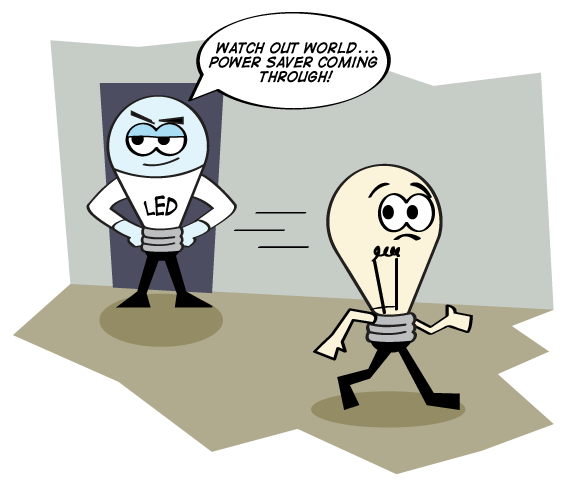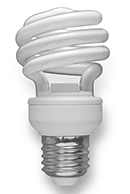Disclaimer: This material is being kept online for historical purposes. Though accurate at the time of publication, it is no longer being updated. The page may contain broken links or outdated information, and parts may not function in current web browsers.

If you need a new light bulb, you have a hard decision to make. There are several kinds of light bulbs to choose from. What are they? Does it make a difference?
Lights use a lot of electricity, so it's important to use the most efficient ones. Efficient bulbs use less electricity to make light. Using less electricity in turn creates less pollution. It's better for everyone.
So what are the different kinds of light bulbs?
The most common light bulbs you can find at the store are incandescent, compact fluorescent (CFL), light emitting diodes (LED), fluorescent, and halogen. It can feel overwhelming!
Let's look at each one individually.
Incandescent

Credit: KMJ, alpha masking by Edokter
CFL

Credit: Sun Ladder
Fluorescent

Credit: Christian Taube
LED

Credit: Led-neolight
Halogen

Credit: de:Benutzer:Ralf Pfeifer












